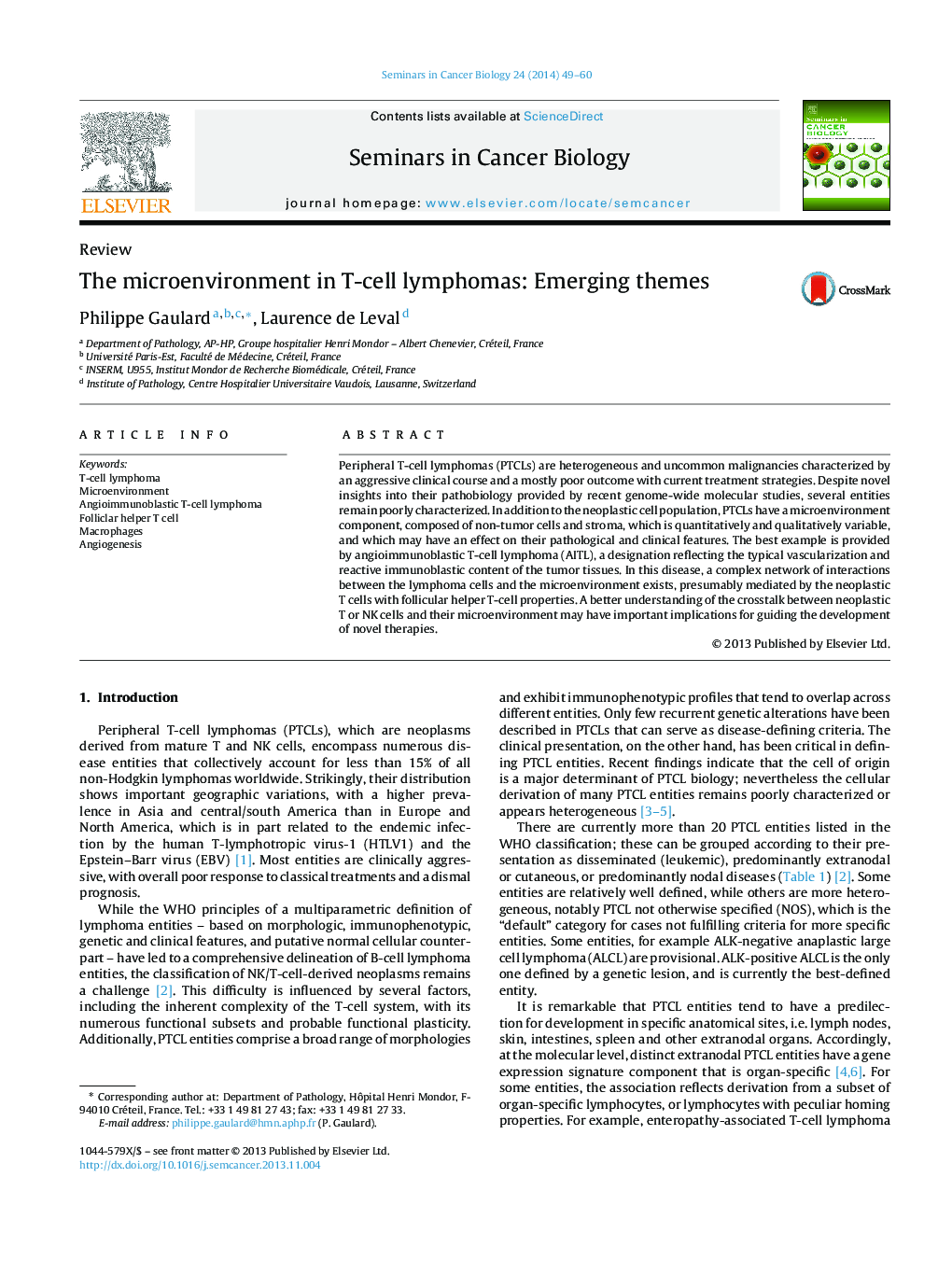| Article ID | Journal | Published Year | Pages | File Type |
|---|---|---|---|---|
| 2023913 | Seminars in Cancer Biology | 2014 | 12 Pages |
Peripheral T-cell lymphomas (PTCLs) are heterogeneous and uncommon malignancies characterized by an aggressive clinical course and a mostly poor outcome with current treatment strategies. Despite novel insights into their pathobiology provided by recent genome-wide molecular studies, several entities remain poorly characterized. In addition to the neoplastic cell population, PTCLs have a microenvironment component, composed of non-tumor cells and stroma, which is quantitatively and qualitatively variable, and which may have an effect on their pathological and clinical features. The best example is provided by angioimmunoblastic T-cell lymphoma (AITL), a designation reflecting the typical vascularization and reactive immunoblastic content of the tumor tissues. In this disease, a complex network of interactions between the lymphoma cells and the microenvironment exists, presumably mediated by the neoplastic T cells with follicular helper T-cell properties. A better understanding of the crosstalk between neoplastic T or NK cells and their microenvironment may have important implications for guiding the development of novel therapies.
